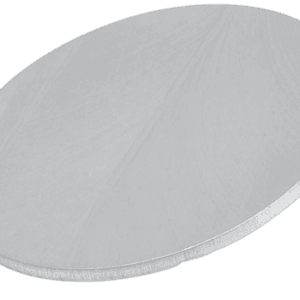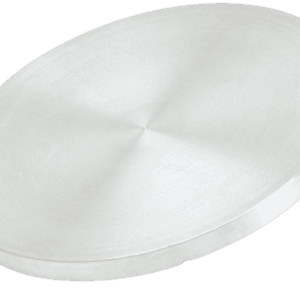| Material Type | Calcium Phosphate |
| Symbol | Ca3(PO4)2 |
| Color/Appearance | White solid |
| Melting Point (°C) |
| Density | |
| Molecular Weight | |
| Sputter | |
| Exact Mass |
Calcium Phosphate Sputtering Targets
Calcium Phosphate (Ca₃(PO₄)₂) sputtering targets are high-purity materials used in the deposition of thin films for a variety of applications across industries such as electronics, biomedical devices, and materials science. Calcium Phosphate is renowned for its biocompatibility and its excellent properties for use in coatings and thin films that require stability and durability.
Specifications
Purity: 99.9%
Circular Targets: Diameter ≤ 14 inches, Thickness ≥ 1mm
Block Targets: Length ≤ 32 inches, Width ≤ 12 inches, Thickness ≥ 1mm
Key Features and Advantages
High Purity: TFM’s Calcium Phosphate sputtering targets are manufactured with a purity of 99.9%, ensuring high-quality thin films with excellent consistency and performance.
Custom Sizes Available: These targets are offered in custom sizes to accommodate specific requirements for both research and development (R&D) and large-scale industrial applications.
Biocompatibility: Calcium Phosphate is known for its biocompatibility, making it a perfect material for biomedical applications, especially in coatings for implants and other medical devices.
Durability: Calcium Phosphate thin films offer excellent mechanical properties, including high hardness and chemical stability, which makes them ideal for coatings that need to withstand harsh environments.
Vacuum Compatibility: These targets are designed to work seamlessly in vacuum deposition systems, ensuring high-efficiency and high-quality thin film production.
Applications
Biomedical Coatings: Calcium Phosphate is widely used in the biomedical field for implant coatings, prosthetics, and bone tissue engineering. Its excellent biocompatibility ensures safe use in the human body.
Semiconductor and Electronics: The material can be used in electronic devices that require high dielectric properties and stability, such as capacitors, resistors, and other thin-film components.
Optical Coatings: Calcium Phosphate films are used in optical coatings, particularly for devices requiring stable and durable coatings that resist wear and corrosion.
Materials Science: As a material for thin-film deposition, Calcium Phosphate is employed in research and development of novel materials for high-performance coatings and other material applications.
Energy Storage: With its stability, Calcium Phosphate can be used in energy storage applications where high chemical and mechanical durability is required, particularly in batteries and capacitors.
Manufacturing Process
Cold-Pressed and Sintered: The Calcium Phosphate sputtering targets are produced through cold pressing and sintering techniques to ensure high density, uniformity, and excellent sputtering performance.
Elastomer Bonding: TFM’s Calcium Phosphate targets are elastomer bonded to the backing plate, ensuring reliable performance and minimizing mechanical stress during the sputtering process.
Cleaning and Packaging: The targets are thoroughly cleaned to remove any contaminants and are carefully packaged to protect from damage or environmental contamination during transport and storage.
Available Options
99.9% Purity: TFM’s Calcium Phosphate sputtering targets are available with a 99.9% purity, ensuring that thin films produced from these targets will have excellent properties and consistency.
Custom Sizes: Custom-sized targets are available for specific application needs, whether for industrial production or research and development purposes.
R&D Applications: Smaller-sized targets are available for research and development (R&D), allowing for prototyping and experimentation in various scientific fields.
Sputtering Target Bonding Service: TFM offers a sputtering target bonding service, ensuring the target is securely attached to the backing plate, enhancing performance during the sputtering process.
Conclusion
TFM’s Calcium Phosphate Sputtering Targets offer an ideal solution for applications requiring high-purity, durable, and biocompatible thin films. With their use in a range of industries, from biomedical to electronics and materials science, these sputtering targets ensure high-quality film deposition for both research and industrial needs. With custom sizes, 99.9% purity, and vacuum compatibility, Calcium Phosphate sputtering targets from TFM provide reliable and consistent performance for cutting-edge applications.





Reviews
There are no reviews yet.